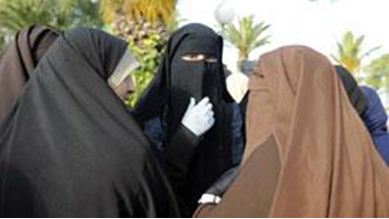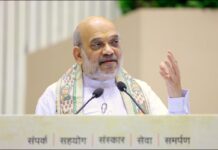 One in every five Canadian women is born outside of the country. However, despite diverse ethnic backgrounds, many communities face discriminatory hurdles others may never witness in their lifetimes. This notion is only amplified in the case of Muslim immigrant women, who can experience challenges springing from multiple biases.
One in every five Canadian women is born outside of the country. However, despite diverse ethnic backgrounds, many communities face discriminatory hurdles others may never witness in their lifetimes. This notion is only amplified in the case of Muslim immigrant women, who can experience challenges springing from multiple biases.
“Gendered Islamophobia” affects them in ways that are often left out of the wider conversation about the immigrant experience.
Whereas Islamophobia is defined as an irrational fear of, aversion to, or discrimination against Islam or people who practice Islam, gendered Islamophobia dissects the issue a step further by diving into more pointed signs of inequity. Muslim women may be victims of both sexism and Islamophobia, disadvantaging them as they navigate through schooling, employment and other public spaces.
But, ultimately, it could play a huge role in their overall sense of safety.
Muslim women, specifically those identifiable through religious headgear or prayer routines practiced in public, can be more prone to being victims due to their “visible” status. This has led to cases of assault as well as blatant displays of anti-Muslim rhetoric.
Aima, a Pakistani Canadian Muslim woman who dons the niqab, has dealt with discrimination in both public spaces and at university as well. She would find herself consistently ignored in classrooms when she attempted to answer or ask a question during lectures; and when she was able to speak in class she found her answers were met with greater scrutiny, even when they were correct.
Other comments directed towards her included unwelcome discussions on forced marriage along with the fact that she’s been repeatedly told that she “[enjoys] so much freedom” for someone wearing a niqab. She adds that “my body will be policed and my choices scrutinized” for the expression of her faith and identity within today’s socio-political climate.
And she’s not alone, Shazlin, a Malaysian immigrant who also wears religious headgear, states she has had similar experiences, in addition to street harassment.
“Even talking about it now, it makes me angry that I was vulnerable and that I was made a victim at that moment when I know I have a lot more agency,” she says. She recalls one particular incident when on a walk with other visibly Muslim women in Toronto, a man verbally assaulted them twice on the street from a van and attempted to flick cigarette butts at them.
Regardless of what Islamophobes think, the comments and questions Muslim women face on an everyday basis eventually begin to take their toll. T.G, who is an Ethiopian Muslim immigrant, has found that people often assume she lacks intellect, agency, and knowledge of pop culture because of her hijab.
“I’m a walking encyclopedia on all the ethnicities, cultural expressions, and nuanced faith practices of the Muslim world,” T.G adds sarcastically. “We are expected to be the compassionate caretaker, teacher, and empathetic listener to all manners of ignorance about our faith. The brunt of the burden of flag-bearing for Islam falls on us – especially hijab-wearing Muslim women.”
But Muslim women who are more visibly ambiguous are not immune to similar experiences. As in the case of Safia, an Arab-Canadian Muslim who does not wear any religious headgear such as the niqab or hijab. Yet, she constantly faces questions related to terrorist groups such as ISIS at her workplace.
One of her former coworkers even emailed her after the Orlando shooting with footage he had found of an Imam who seemed to have made homophobic comments. He wrote to her demanding, “We want answers. What is your community doing about this?”
No action was taken and the comments continued, despite the fact that Safia had made complaints to her immediate supervisor multiple times. In the absence of authoritative intervention, she weathers the harassment through therapy.
Sara, a young professional of North African descent who doesn’t wear a hijab, has attempted to keep her religious affiliation from co-workers, out of fear that repercussions could affect future opportunities and her overall comfort at work.
Sara explains that her former employer would bring her news articles about honor killings in an attempt to make a correlation with her faith that would justify its relevance. The controversial articles forced her into a defensive position on a complex subject that she did not even agree with. Now she avoids questions about religion or her ethnicity to discourage unwelcome conversations.
These experiences only begin to highlight some of the situations Muslim women are faced with on a daily basis. The full impact it may have on their everyday interactions, ability to navigate public spaces or even in their careers remains immeasurable. Courtesy New Canadian Media
Manaal Farooqi







